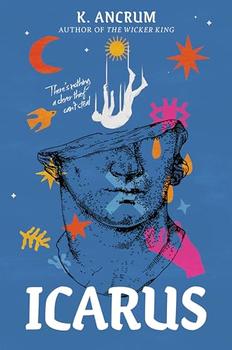Summary | Excerpt | Reading Guide | Reviews | Beyond the Book | Read-Alikes | Genres & Themes | Author Bio

Critics' Opinion:
Readers' Opinion:
First Published:
Apr 2020, 400 pages
Paperback:
Mar 2021, 400 pages
 Book Reviewed by:
Book Reviewed by:
Kim Kovacs
Buy This Book
This article relates to Hidden Valley Road
 In Hidden Valley Road, Robert Kolker writes about the Galvin family's experience with schizophrenia and discusses early research into the disorder performed under the auspices of the National Institute of Mental Health (NIMH).
In Hidden Valley Road, Robert Kolker writes about the Galvin family's experience with schizophrenia and discusses early research into the disorder performed under the auspices of the National Institute of Mental Health (NIMH).
The NIMH's website states it's the "lead federal agency for research on mental disorders," with a mission "to transform the understanding and treatment of mental illnesses through basic and clinical research, paving the way for prevention, recovery, and cure." It has a budget of almost $2 billion (2020) and lists over 1,300 employees, contractors and research fellows as current collaborators.
In support of its mission, NIMH generates research and promotes research training to fulfill the following objectives:
NIMH scientists are engaged in research — including lab work and clinical trials — involving neuroscience, behavioral science, brain imaging and molecular genetics to gain a better understanding of the physiological and genetic causes of mental illness. They also study the most effective treatment and prevention methods, from pharmaceuticals to behavioral therapy; serve as an educational resource for patients, doctors and organizations; and provide funding for other scientists working in the field of mental health.
The history of the NIMH begins in 1798 with the founding of the Marine Hospital Service (MHS) to provide healthcare for merchant seamen. In the 1880s the group's mandate changed when the U.S. Congress charged it with examining passengers arriving by ship from other countries, looking for signs of communicable diseases. Dr. Joseph J. Kinyoun joined the MHS as an assistant surgeon in 1886 and subsequently set up a tiny lab on the premises to research cholera. His efforts were so successful that his lab became quite well-known, and consequently in 1902 the MHS was tasked with creating standards and regulating the production of vaccines and antitoxins. It went on to investigate other health-related issues of the day, notably discovering the sources of anthrax and tetanus outbreaks in the early 20th century.
The 1930 Ransdell Act changed the name of the MHS to the National Institute of Health (NIH), and authorized the establishment of research fellowships. The agency played a critical role during World War II, helping to develop treatments for tropical diseases and performing research into the effects of high-altitude flight on pilots. It faced funding challenges after the war, but quickly discovered it was easier to get Congress to fund specific projects rather than give a large sum to the agency as a whole. Consequently, the NIH changed its name to the National Institutes of Health and broke its research efforts into smaller "centers," such as the National Cancer Institute.
On July 3, 1946, President Harry Truman signed the National Mental Health Act, part of which called for the establishment of a National Institute of Mental Health under the auspices of the NIH and moved oversight of mental health programs from the state to the federal level. One year later, the newly-formed agency awarded its first mental health research grant to Dr. Winthrop N. Kellogg of Indiana University for his study into the "Basic Nature of the Learning Process." The NIMH continued to expand, in 1960 establishing new centers for the studies of child mental health, crime, urban mental health issues and suicide. The late 1960s and early 1970s saw the addition of alcohol and substance abuse as a separate area of study.
One of the agency's most impressive accomplishments came in 1988 with the establishment of the Center for Collaborative Genomic Studies on Mental Disorders. This new center created a data warehouse of over 200,000 high-quality genetic samples covering a wide variety of mental illnesses. It claims to be "the only NIH repository that specializes in offering the research community DNA, RNA, and cell lines from large collections of individuals with psychiatric illness and psychiatrically normal controls." It has provided unprecedented access to a huge bank of genetic data, which to date has resulted in over 800 publications and over 70,000 citations in scientific papers worldwide.
NIMH logo, courtesy of NIMH
Filed under Medicine, Science and Tech
![]() This "beyond the book article" relates to Hidden Valley Road. It originally ran in December 2020 and has been updated for the
March 2021 paperback edition.
Go to magazine.
This "beyond the book article" relates to Hidden Valley Road. It originally ran in December 2020 and has been updated for the
March 2021 paperback edition.
Go to magazine.




Your guide toexceptional books
BookBrowse seeks out and recommends the best in contemporary fiction and nonfiction—books that not only engage and entertain but also deepen our understanding of ourselves and the world around us.